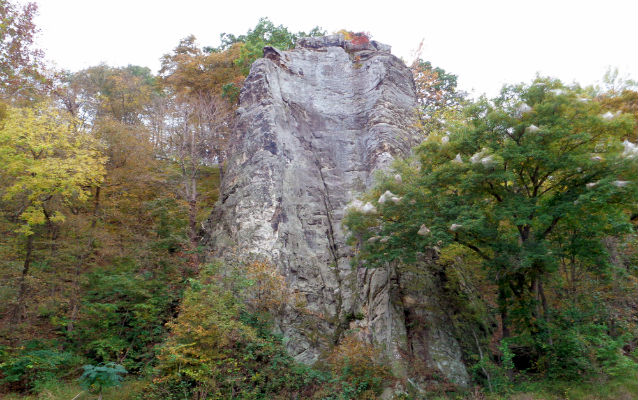A “nightingale” sings all during the night and later in the day, a creek is named after it. With Sgt. Ordway at the helm, a rope catches on a tree and breaks the barge‘s mast. Clark ascends a high hill—now called Sugar Loaf Rock—in search of lead ore. The captains also mark several trees with their names.
A Broken Mast
by Yellowstone Public Radio[1]Originally aired weekdays by Yellowstone Public Radio during the Bicentennial observance of 2003-2006. Narrated by Hal Hansen. Scripts by Whit Hansen and Ed Jacobson. Produced by Leni Holliman. © … Continue reading
A Broken Mast
our mast broke by my Stearing the Boat near the Shore the Rope or Stay to the mast got fast in a limb of a Secamore tree & it broke verry Easy.
—John Ordway
Sugar Loaf Rock
I assended a hill of about 170 foot on the top of which is a Moun and about 100 acres of Land of Dead timber . . . . on this hill the french report that Lead ore has been found, I saw no mineral of that description, Capt Lewis Camped imediately under this hill
—William Clark
Mysterious Nightingale
passed a Small Creek at 1 ms. 15 yd. Wide which we named Nightingale Creek from a Bird of that discription which Sang for us all last night, and is the first of the Kind I ever heard.
—William Clark
Branding Trees
Captains Lewis & Clark had several Trees branded, with their Names
—Joseph Whitehouse
Sugar Loaf Rock is a High Potential Historic Site along the Lewis and Clark National Historic Trail managed by the U.S. National Park Service. Today, it is difficult to view the landmark, and public access is restricted.
Notes
| ↑1 | Originally aired weekdays by Yellowstone Public Radio during the Bicentennial observance of 2003-2006. Narrated by Hal Hansen. Scripts by Whit Hansen and Ed Jacobson. Produced by Leni Holliman. © 2003 by Yellowstone Public Radio. |
|---|



